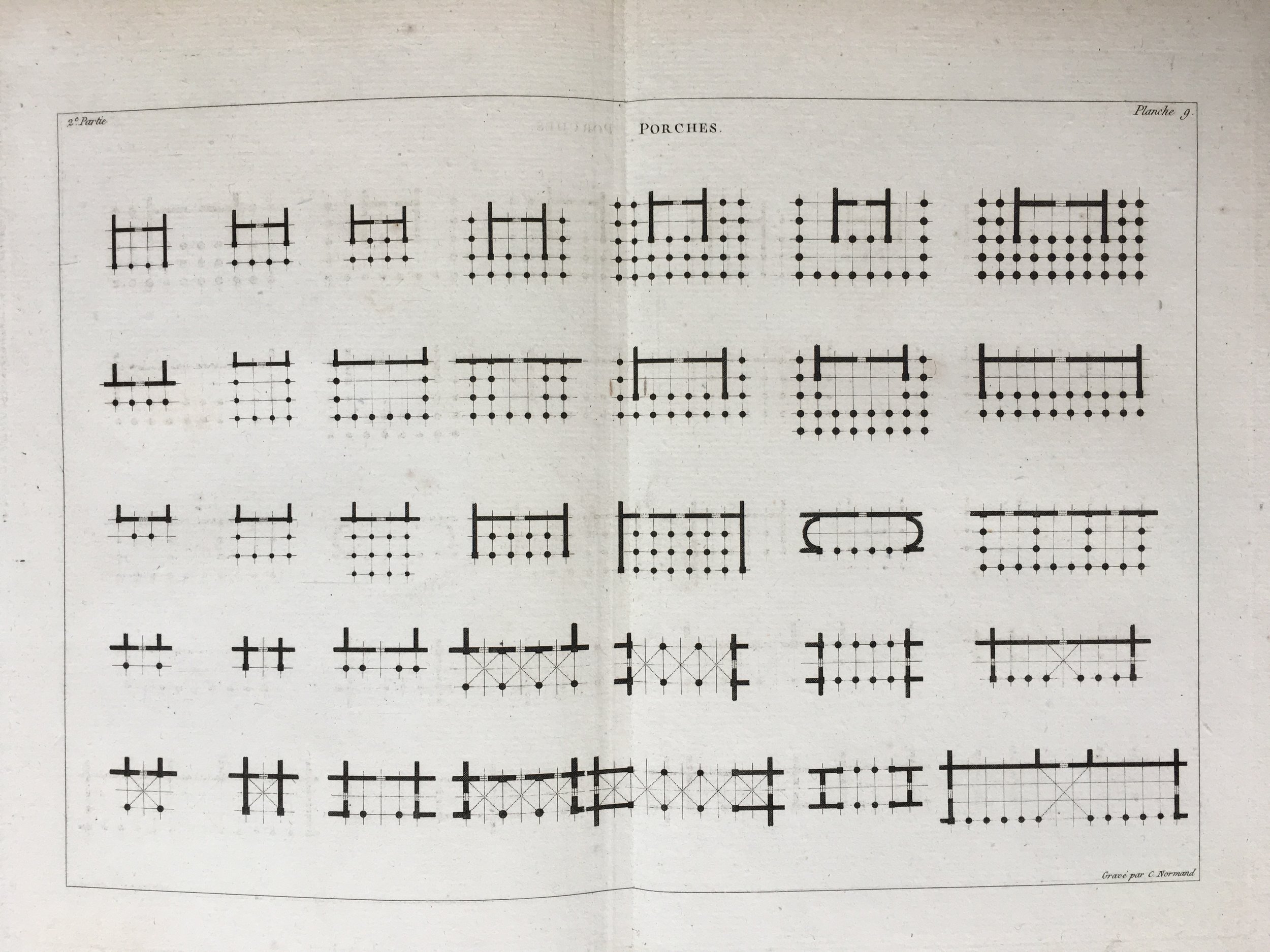J.N.L. Durand
Durand, like his teacher Boullée, did not practiced but contributed to architecture instead as a theoretician and educator through developing specific methods and systems of reading, theorising and teaching.
According to Durand, Architecture is a science and an art at the same time: like a science, architecture demands knowledge; like art, it requires talent. Talent is none other than the just and easy application of knowledge. This correctness and facility cannot be acquired except by sustained exercise and multiple applications. In the sciences, one can know something perfectly after having done it a single time. But in the arts, one cannot know how to execute something well without having done so a considerable number of times.
Long before Koolhaas's 'Elements of Architecture', there was Durand's attempt to determine the fundamental principles of architecture. For Durand it was first necessary to establish the basic elements that characterize it as a discipline. Just as Euclidean geometry begins with the definition of the point and the line, architecture also needed to have its own ascertainable elements. The fundamental elements of a building and, by extension, of architecture were for Durand those that can be found in any building, regardless of its style. His theoretical objective was to systematize architectural knowledge in order to establish a rational way of design buildings. As result, he developed a science of architecture, perhaps as an attempt to match those scientific disciplines rising rapidly during his time. Précis des leçons (Accurate Lessons) which was published in 1802 to articulate his position.












